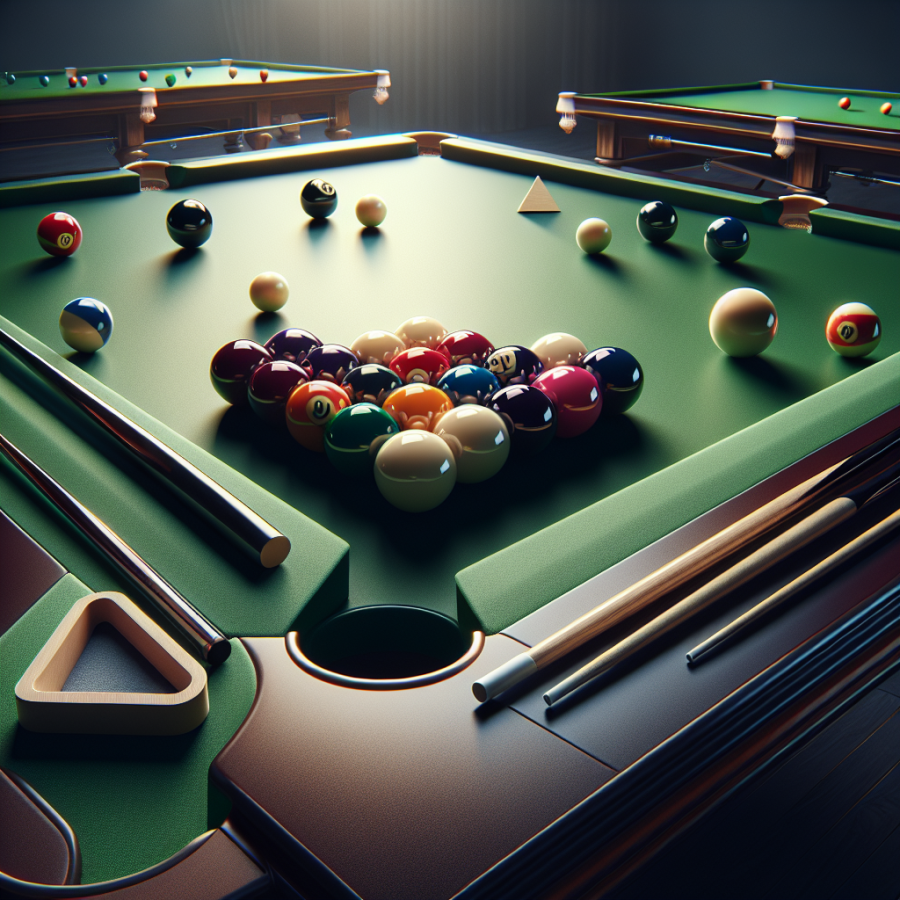Strategic Frame Play: Tactical Approaches to Dominate the Snooker Table
Within the grand strategy for snooker success, a sophisticated game plan – the Strategic Frame Play – is indispensable for dominating the green baize. Expert players deploy tactical approaches not only aiming for the highest scores but also to outwit their opponents by playing the long game.
One of the critical tactics in the professional playbook is the art of safety play. This is a defensive strategy that involves placing the cue ball in a position that makes it difficult for the opponent to make a legal or beneficial shot. Safety play can force an opponent to make mistakes, providing openings to take control of the frame.
Intelligent shot selection is another pivotal aspect of strategic frame play. A player must not only consider the immediate pot but also think several shots ahead. This foresight requires an acute understanding of angles and spin. The right shot is often not the one that pockets a ball but one that sets up the next few shots or leaves the cue ball in an advantageous position, ready to capitalize on any errors made by the opponent.
Another tactical maneuver is controlling the tempo of the frame. Much like a chess master controlling the centre of the board, a savvy snooker player will dictate the pace of play. This may involve quick-fire breaks to build confidence and apply psychological pressure or a more measured, methodical approach to unsettle an opponent who favors a faster or slower rhythm.
Break-building strategy is also central to dominating the snooker table. Maximize scoring opportunities through meticulous planning and precise cue ball control. The professionals aim for positioning that allows for a series of pots – focusing not just on the current shot but ensuring the cue ball ends up in a favorable spot for the next.
The tactical use of snookers, where the cue ball is hidden behind other balls, thereby hampering the opponent's view of their desired object ball, can lead to gaining penalty points as well as regaining table control. Executing successful snookers requires both finesse and a deep understanding of how the balls can be manipulated to one's advantage.
In addition, exploiting the psychological game is a less tangible yet equally important tactical approach. Maintaining a calm demeanor, exhibiting confidence, and managing one's emotions during play can unnervingly contrast with an opponent's stress, especially in crucial moments. Projecting this image can sometimes be enough to coax mistakes from the opponent or to gain the mental upper hand, turning seemingly tight frames to one's favor.
Read also:
Who's Dominating Today's Soccer Landscape?
Perfecting Shot Precision and Ball Control
Perfecting shot precision and ball control is fundamental to success in the challenging game of snooker. To dominate the green baize, one must acquire the nuanced skills that enable the cue ball to be placed with surgical precision, which can often mean the difference between victory and defeat.
Improving shot precision begins with a solid stance and grip. A stable stance ensures that your body is perfectly aligned with the cue and the target ball. The grip on the cue should be relaxed yet firm, allowing for smooth cue action. Consistency in these fundamentals lays the ground for repeatable accuracy in your shots.
Cue action is another critical aspect of precision. A straight and smooth cue action means that the cue will strike the cue ball at the exact point intended, without any lateral movement that could cause deviation. Practicing this motion requires focus and repetition, often with the help of a coach or using training aids to provide feedback on the straightness of your stroke.
Positional play is another key element and is inextricably linked to ball control. Understanding the angles and the physics at play can help you predict the path of the cue ball after it strikes the target ball. This is not just about potting a ball, but also preparing for the next shot, by placing the cue ball in an optimal location. Mastering spin – using backspin, topspin, and side spin (also known as English) – can significantly alter the cue ball's trajectory and is essential for tightening control over the game.
Drills play a crucial role in honing shot precision and ball control. They can be designed to practice potting from different positions, controlling the cue ball over varying distances, or negotiating complex positional plays. Repeated practice of these drills helps in developing muscle memory and a feel for the table, which is crucial during high-pressure match situations.
Another important aspect is the ability to read the table and plan several shots ahead. This mental mapping not only improves precision but also ensures that you're not simply reacting to the table after each shot but actively controlling the game's flow.
Dealing with pressure is also a skill that can't be overlooked. Under pressure, even the most skilled players can find their precision wavering. Players should practice maintaining their composure and executing their learned techniques even under the intense pressure of competition.
Lastly, understanding and maintaining the equipment plays a part in shot precision and ball control.




